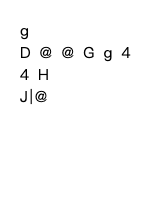Roblox Sheet

Roblox Sheet
Kirby Perfect!
Hirokazu Ando
¡Experimenta Kirby Perfect! de Hirokazu Ando de una manera completamente nueva! Usa tu teclado para tocar Kirby Perfect! Partituras de piano de Roblox en el Piano Virtual. Ya seas un jugador de piano de Roblox o quieras practicar piezas clásicas, esta Kirby Perfect! Partitura de piano de Roblox es perfecta para ti, facilitando el progreso de principiante a experto. Kirby Perfect! está incluida en las TOP 100 Partituras de piano de Roblox, junto con muchas otras canciones fáciles, clásicas, pop, navideñas y colecciones de Disney para que toques.
52 vistas
Roblox Sheet

Roblox Sheet
Perfect
Ed Sheeran
¡Experimenta Perfect de Ed Sheeran de una manera completamente nueva! Usa tu teclado para tocar Perfect Partituras de piano de Roblox en el Piano Virtual. Ya seas un jugador de piano de Roblox o quieras practicar piezas clásicas, esta Perfect Partitura de piano de Roblox es perfecta para ti, facilitando el progreso de principiante a experto. Perfect está incluida en las TOP 100 Partituras de piano de Roblox, junto con muchas otras canciones fáciles, clásicas, pop, navideñas y colecciones de Disney para que toques.
51 vistas
Roblox Sheet

Roblox Sheet
She Looks So Perfect
5 Seconds of Summer
¡Experimenta She Looks So Perfect de 5 Seconds of Summer de una manera completamente nueva! Usa tu teclado para tocar She Looks So Perfect Partituras de piano de Roblox en el Piano Virtual. Ya seas un jugador de piano de Roblox o quieras practicar piezas clásicas, esta She Looks So Perfect Partitura de piano de Roblox es perfecta para ti, facilitando el progreso de principiante a experto. She Looks So Perfect está incluida en las TOP 100 Partituras de piano de Roblox, junto con muchas otras canciones fáciles, clásicas, pop, navideñas y colecciones de Disney para que toques.
51 vistas



















